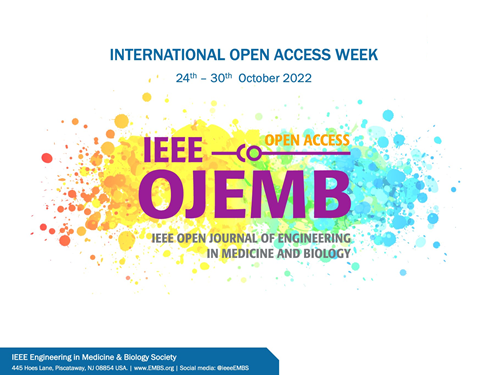通过前后校准差异分析手表式血压测量的稳定性
IF 2.9
Q3 ENGINEERING, BIOMEDICAL
IEEE Open Journal of Engineering in Medicine and Biology
Pub Date : 2024-04-03
DOI:10.1109/OJEMB.2024.3384488
引用次数: 0
摘要
智能手表技术的最新进展引入了基于光电血压计(PPG)的血压(BP)估算,实现了方便、连续的血压监测。然而,临床使用的准确性和验证问题仍然令人担忧。本研究使用来自三星 Galaxy Watch 活动的真实数据来评估基于智能手表的血压测量。该方法通过比较校准前后的平均收缩压 (SBP) 来检查校准稳定性,并通过回归分析确定影响稳定性的因素。提出了用户层面的策略,以减轻校准不稳定性并强调遵守指南。值得注意的是,校准不稳定性在夜间测量和同一时间内平均多个读数时会降低。遵守指南至关重要,尤其是对于老年人、女性和高血压患者。这项研究通过广泛的数据集提高了测量的可靠性,揭示了校准稳定性。本文章由计算机程序翻译,如有差异,请以英文原文为准。
Stability of Watch-Based Blood Pressure Measurements Analyzed by Pre-Post Calibration Differences
Recent advancements in smartwatch technology have introduced photoplethysmography (PPG)-based blood pressure (BP) estimation, enabling convenient and continuous monitoring of BP. However, concerns about accuracy and validation for clinical use persist. This study uses real-world data from a Samsung Galaxy Watch campaign to assess smartwatch-based BP measurements. The approach examines calibration stability by comparing average systolic BP (SBP) before and after calibration, identifying factors affecting stability through regression analysis. User-level strategies are suggested to mitigate calibration instability and emphasize guideline adherence. Notably, calibration instability is found to decrease during night-time measurements and when averaging multiple readings in the same time frame. Guideline adherence is vital, particularly for the elderly, females, and individuals with hypertension. The research enhances measurement reliability through extensive datasets, shedding light on calibration stability.
求助全文
通过发布文献求助,成功后即可免费获取论文全文。
去求助
来源期刊

IEEE Open Journal of Engineering in Medicine and Biology
ENGINEERING, BIOMEDICAL-
CiteScore
9.50
自引率
3.40%
发文量
20
审稿时长
10 weeks
期刊介绍:
The IEEE Open Journal of Engineering in Medicine and Biology (IEEE OJEMB) is dedicated to serving the community of innovators in medicine, technology, and the sciences, with the core goal of advancing the highest-quality interdisciplinary research between these disciplines. The journal firmly believes that the future of medicine depends on close collaboration between biology and technology, and that fostering interaction between these fields is an important way to advance key discoveries that can improve clinical care.IEEE OJEMB is a gold open access journal in which the authors retain the copyright to their papers and readers have free access to the full text and PDFs on the IEEE Xplore® Digital Library. However, authors are required to pay an article processing fee at the time their paper is accepted for publication, using to cover the cost of publication.
 求助内容:
求助内容: 应助结果提醒方式:
应助结果提醒方式:


